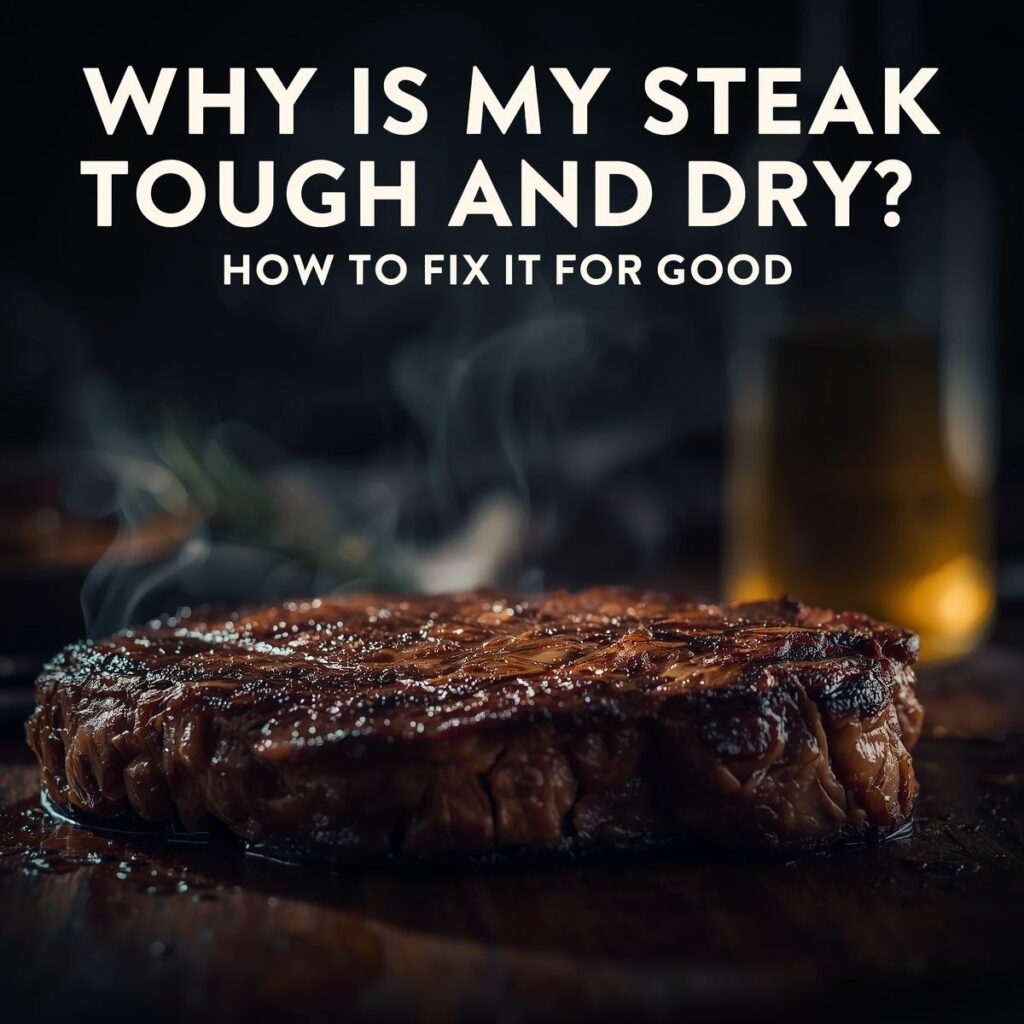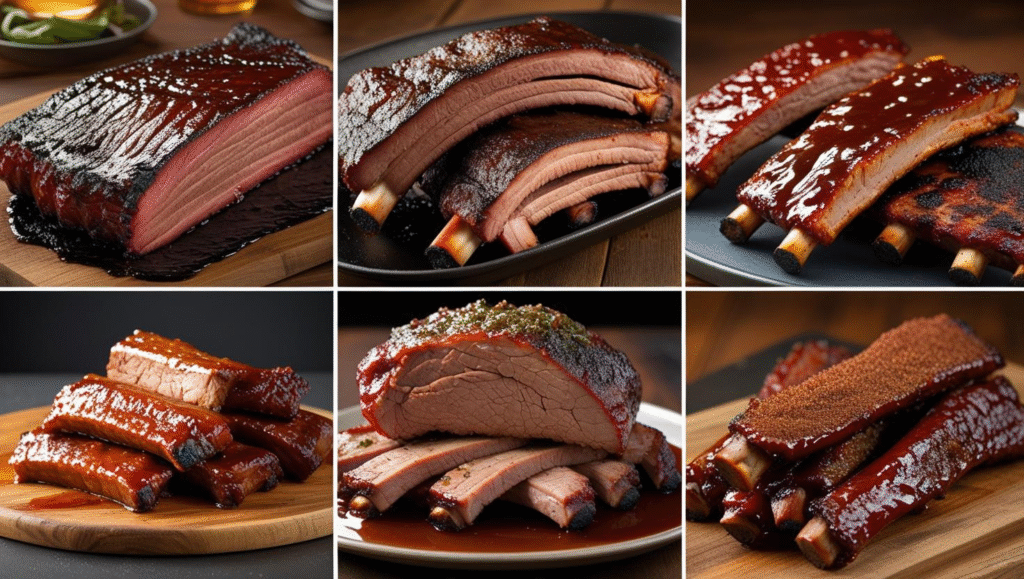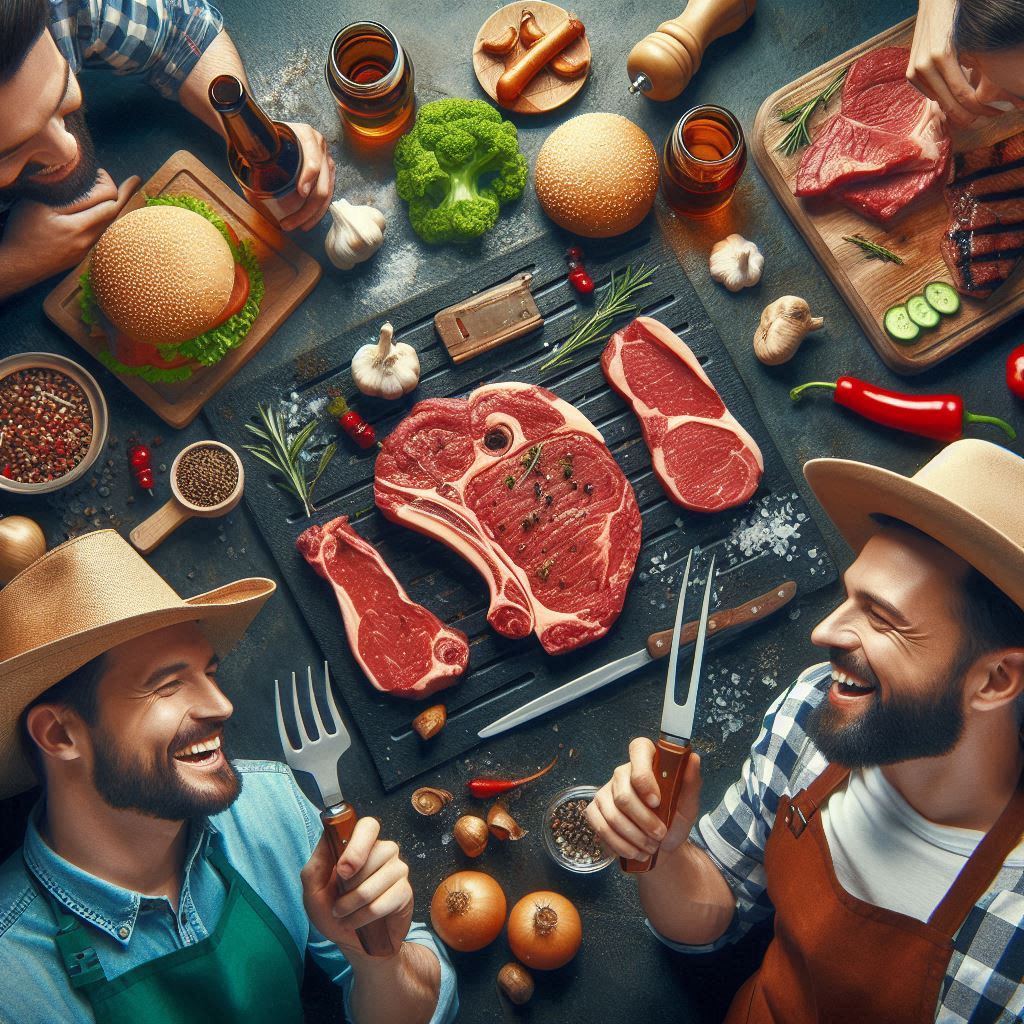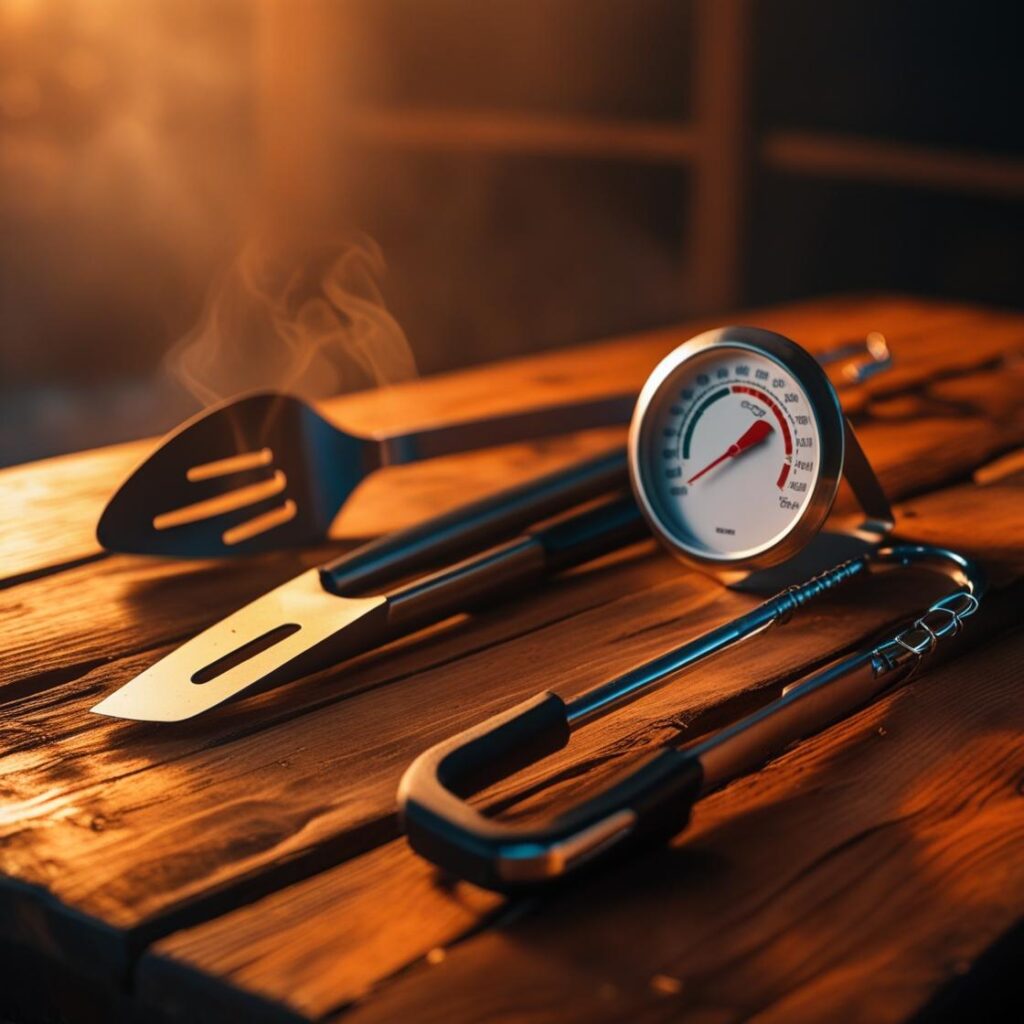Table of Contents Hide ContentsWhy Is My Steak Tough and Dry? How to Fix It for Good
There’s nothing quite as disappointing as anticipating a perfectly cooked steak, only to cut into it and find it’s either unpleasantly chewy or bone-dry. The sizzle promised so much, but the reality leaves you wondering, “Why is my steak tough and dry?” This is a common frustration for many home cooks, but the good news is that these issues are almost always preventable. Understanding the root causes—from improper cooking techniques to common preparation blunders—is the first step to turning your steak game around.
This comprehensive guide will expose the real reasons behind your tough steak and dry steak woes and provide actionable steps to ensure every future bite is tender, juicy, and full of flavor.
The Science of a Tender Steak: Understanding the Enemy
Before we dive into the mistakes, let’s understand why steak gets tough and dry in the first place.
- Collagen and Muscle Fibers: Steak is muscle. Muscles are made of protein fibers held together by connective tissue, primarily collagen. When heated gently over time, collagen breaks down into gelatin, making the meat tender and juicy. When heated too quickly or aggressively, these fibers contract and squeeze out moisture, making the meat tough and dry.
- Moisture Loss: High heat, prolonged cooking, and improper resting all contribute to moisture loss. Meat is mostly water, and as that water evaporates or is squeezed out, the steak becomes dry.
Recognizing these fundamental principles is key to understanding why is my steak tough and dry and, more importantly, how to prevent it.
1. Overcooking: The #1 Culprit for a Tough Steak
This is, without a doubt, the most common reason your steak is tough and dry. Every degree above your desired doneness pushes the meat further into dryness and toughness.
The Problem: Cooking Without a Thermometer
Guessing doneness by eye or touch is unreliable. What might seem like medium-rare can easily be medium-well or beyond, leading to an overcooked steak.
- The Fix: Invest in a reliable instant-read meat thermometer. It’s the single most important tool for cooking steak perfectly. Pull your steak off the heat 5-10 degrees before your target internal temperature, as it will continue to cook as it rests (carryover cooking).
- Rare: 120-125°F (49-52°C)
- Medium-Rare: 125-130°F (52-54°C)
- Medium: 130-135°F (54-57°C)
- Medium-Well: 135-140°F (57-60°C)
- Well-Done: 140°F+ (60°C+)
- Suggested Image Alt Text: An instant-read thermometer accurately measuring the internal temperature of a steak, preventing an overcooked steak.
The Problem: Pan or Grill Too Hot for Too Long
Searing is good, but prolonged exposure to extremely high heat will cook the exterior too quickly while the interior struggles to catch up, leading to a burnt outside and a gray, chewy steak inside.
- The Fix: Use the reverse sear method for thicker steaks (1.5 inches or more). Cook gently in a low oven first, then finish with a quick, high-heat sear. This allows for an even cook from edge to edge and prevents the exterior from burning while the interior reaches doneness. Read our full guide on Reverse Searing: How to Cook the Perfect Steak Every Time.
2. Insufficient Resting: A Major Cause of Dry Steak
This is arguably the most overlooked and critical step. Cutting into a steak immediately after cooking is a guarantee for a dry steak.
The Problem: Juices Escaping
When steak cooks, the muscle fibers contract and push all the juices to the center. If you slice it immediately, those juices will pour out onto your cutting board, leaving the meat inside dry and flavorless.
- The Fix: Always, always, always rest your steak. Transfer your cooked steak to a cutting board and let it rest for at least 5-10 minutes (for thinner cuts) or 10-15 minutes (for thicker cuts) before slicing. This allows the muscle fibers to relax and reabsorb those precious juices, ensuring a juicy steak.
- Suggested Image Alt Text: A perfectly cooked steak resting on a cutting board, demonstrating how to prevent dry steak.
3. Poor Prep: Setting Your Steak Up for Failure
Many common steak cooking mistakes happen before the steak even touches the heat.
The Problem: Not Patting the Steak Dry
Moisture on the surface of your steak will turn into steam in the hot pan, cooling the cooking surface and preventing the Maillard reaction (the browning that forms the delicious crust). Without a proper crust, your steak will “stew” in its own juices and cook unevenly, contributing to a tough steak.
- The Fix: Pat your steak completely dry with paper towels just before seasoning. For an even better result, season it an hour or more in advance and let it air dry in the fridge on a wire rack. This allows the surface to become truly dry. This step is crucial for how to fix tough steak and achieve a great sear. Read more on this in Why Won’t My Steak Develop a Crust?
The Problem: Not Seasoning Properly
Undersalting is a common issue. Salt not only adds flavor but also helps the meat retain moisture.
- The Fix: Use a generous amount of coarse salt (like kosher salt) and fresh black pepper. For best results, dry brine your steak at least 40 minutes before cooking, or even overnight. This allows the salt to penetrate the meat, helping to tenderize it and improve moisture retention. Check out our detailed guide on How to Brine Pork the Right Way (the principles apply to beef too!).
The Problem: Searing a Cold Steak (Sometimes)
While the “bring to room temp” rule has been debunked for thick steaks (see reverse sear), searing a very cold, thin steak directly can still lead to issues.
- The Fix: For thin steaks, let them sit out for 15-30 minutes to take the extreme chill off. For thick steaks, embrace the reverse sear method, which works perfectly with a cold steak, as explained in Can You Sear Steak Straight From the Fridge?
4. Wrong Cut or Poor Quality: Sometimes It’s Not You
While often the cook’s fault, sometimes the issue lies with the meat itself.
The Problem: Lean, Untenderized Cuts
Some cuts are naturally tougher because they come from muscles that do a lot of work (e.g., flank, skirt, round steak). If not cooked correctly, these will always be a chewy steak. Low-grade beef also has less marbling (intramuscular fat), which means less internal moisture and flavor.
- The Fix:
- Choose Wisely: For tender results, opt for cuts with good marbling like ribeye, New York strip, or tenderloin (filet mignon).
- Tenderize: For tougher cuts, consider mechanical tenderizers (mallets), marinades (acidic marinades can help break down fibers), or slow-cooking methods (braising, stewing).
- Quality Grade: Look for “Choice” or “Prime” grade beef. “Select” grade is typically leaner and more prone to being a tough steak.
The Problem: Slicing with the Grain
Even a perfectly cooked, rested steak can seem tough if sliced incorrectly.
- The Fix: Always slice your steak against the grain. Look at the direction of the muscle fibers and slice perpendicularly to them. This shortens the fibers, making each bite much more tender. This is a critical step for how to fix tough steak.
Troubleshooting Table: Why is My Steak Tough and Dry?
FAQ: Preventing Tough & Dry Steak
Q: How can I prevent dry, chewy steak?
A: The key is cooking to the correct internal temperature and using the right cut for your cooking method. For lean cuts like tenderloin or sirloin, sear quickly and rest properly. For tougher cuts like flank or chuck, low-and-slow cooking or marinating can help keep the meat juicy and tender.
Q: Why is my grilled steak tough?
A: Toughness often comes from overcooking or not letting the meat rest. Grilling at too high a temperature or slicing immediately can make even good cuts chew-heavy. Choosing the right cut and monitoring internal temperature helps prevent this.
Q: How do I make a tough steak tender?
A: You can tenderize steak using several methods: marinating with acidic ingredients (like vinegar or citrus), mechanically tenderizing with a mallet, slow cooking tougher cuts, or slicing thinly against the grain.
Q: Why is my steak always dry?
A: Dry steak usually means overcooking, insufficient fat, or skipping a resting period. Using a thermometer and removing the steak from heat a few degrees before the target temperature will lock in moisture.
Q: Can you tenderize tough steak after cooking?
A: Yes! Thinly slicing against the grain or using a quick braise for tougher cuts can improve tenderness after cooking. However, prevention with proper cooking is always best.
Q: What are the common causes of tough steak?
A: Overcooking, cooking lean cuts too slowly, not resting, cutting against the grain, or using inherently tougher cuts without proper preparation are all common reasons.
Q: Why is my flank steak tough?
A: Flank steak is a lean, fibrous cut that becomes tough if overcooked. Marinating before cooking, searing quickly, and slicing thinly against the grain will keep it tender.
Q: What’s the best way to cook steak to avoid toughness?
A: Match the cut to the method: fast, high-heat searing for tender cuts; low-and-slow braising for tougher cuts. Always use a thermometer and let the steak rest before slicing.
Q: Why is my steak tough even after resting?
A: Resting only helps redistribute juices—it won’t fix overcooked or improperly prepared meat. Make sure your cooking method, temperature, and cut selection are correct first.
Q: Why is my steak dry but not overcooked?
A: Even if not overcooked, dry steak can result from very lean cuts, cooking on too high heat, or cutting before juices redistribute. Resting and selecting cuts with some marbling help maintain juiciness.
Conclusion: Mastering the Art of the Tender, Juicy Steak
No more asking, “Why is my steak tough and dry?” By understanding these common pitfalls and applying the right techniques, you can transform your cooking. From accurate temperature control and diligent resting to proper seasoning and thoughtful slicing, every step contributes to the ultimate goal: a perfectly tender, incredibly juicy, and supremely flavorful steak. Embrace these tips, and you’ll be well on your way to becoming a true steak master.






